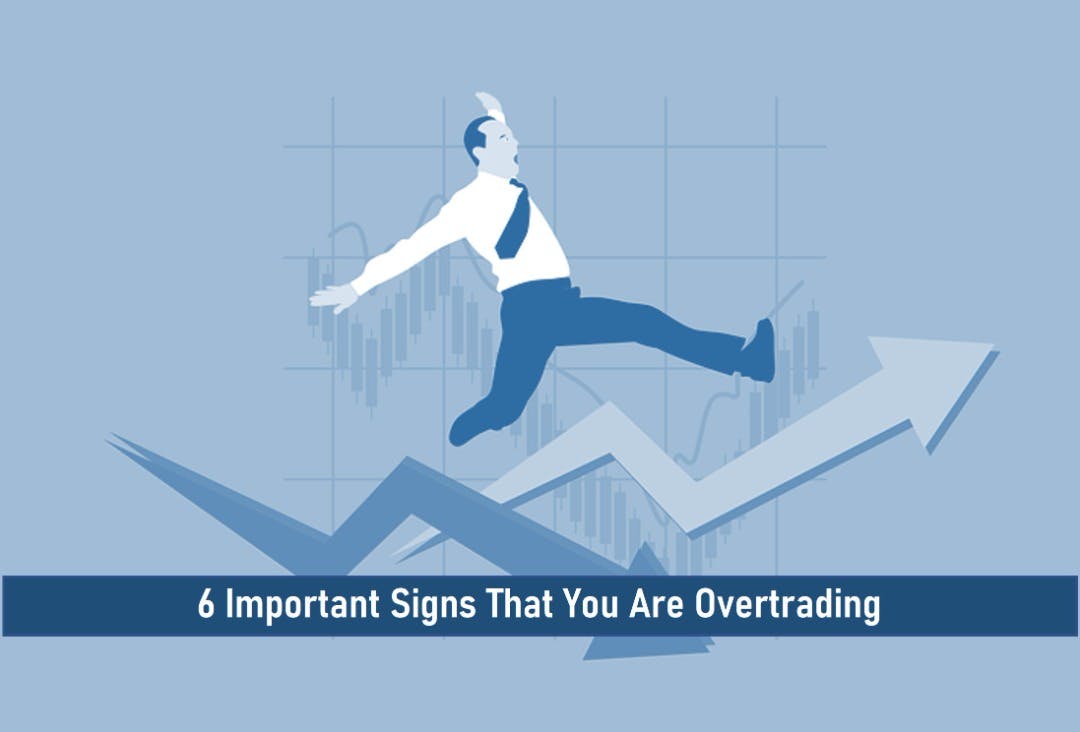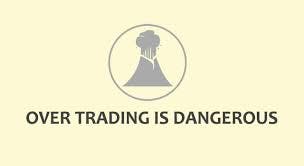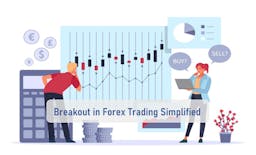
Unsystematic trading forces the trader to work harder and harder in the hope of making a profit. It gets to the point that they develop a real addiction to trading. Some traders start overtrading or trading too actively; for the most part it concerns short positions.
And the reason is simple – the trader has not identified a constructive trading method for himself. This means choosing a strategy, tools, having an individual style, experience, and other components.

Key Takeaways
•When traders don’t have “enough” trades they often start taking trades that don’t comply with their strategy and their hard rules. They take trades they would otherwise discard as not so good or not so clear.
•When traders feel like they would like to take more trades, they often search for them on lower timeframes as this gives them more trading signals and trade opportunities. However, the lower the timeframe the more signals you get. Unfortunately, the quality of the signals goes down.
How Not to Get Addicted:
- Learn to identify overtrading.
- Understand the current situation and analyze whether it is possible to work this way for a long time.
- Identify the rationale for your method and use it in similar situations. So you will avoid unnecessary self-activity.
- Create your baseline criterion for normal trading activity, so that there is something to start from. So you can track how far the deviation from the norm has gone.
- Take the number of completed trades or the volume of trade as a basis. But here natural deviations are allowed. For example, general market activity will increase with high fluctuations, when everyone tries to open as many trades as possible.
Signs of Overtrading
1. Taking Bad Quality Trades
When traders don’t have “enough” trades they often start taking trades that don’t comply with their strategy and their hard rules. They take trades they would otherwise discard as not so good or not so clear.
However, when there are not so many trading opportunities, such not-so-good signals start to look more appealing to them. This doesn’t need to be intentional, it is just the way the human brain works – it adapts.
It basically tells you: “Well buddy, there aren’t too many nice trading opportunities right now so if you want to trade, you need to lower your standards”.
So little by little you lower your standards. Usually, you won’t even notice that you are taking low-quality signals (and turning them into losing trades).
What is the way out of this? The best thing you can do is to take screenshots of your trades and go through them from time to time.
This way you will always remember how the good trades and signals look like. You won’t be unconsciously lowering your standards and you won’t be taking low-quality signals.
You will be only taking trades that are the same quality as the ones from your screenshots.
SEE ALSO: Types of Overtrading and How to Avoid Them
2. Trading Assets You Have Little Experience With
Another sign of forcing trades is looking for signals among trading instruments you have little or no experience with.
If you, for example, daytrade EUR/USD and USD/JPY, then a typical example would be if you started looking for trading opportunities let’s say on GBP/JPY, DAX, or on OIL. Every trading instrument or forex pair has its own specifics, volatility, and behavior.
You cannot expect that if you are familiar and profitable on the EUR/USD you will automatically be successful trading US indexes.
Well, you can be, but you need to dedicate some time to back testing and training with the new set of trading instruments first.
You can’t start trading just like that and expect success. It is okay to expand and learn to trade new trading instruments but don’t jump into trading them without a proper preparation.
So whenever you are tempted to trade some new trading instrument, it is important that you do it slowly and that you do your preparation and backtesting first.
Don’t jump right in just because you have an urge to trade more.
3. Looking for Trades on Lower Timeframes
When traders feel like they would like to take more trades, they often search for them on lower timeframes. Those indeed give them more trading signals and trade opportunities.
The lower the timeframe the more signals you get. Unfortunately, the quality of the signals goes down.
Especially if such traders have no experience with the lower timeframes that they attempt to trade.
Honestly, if you trade swing trades using 4-hour charts, then you won’t be making more money if you switch to 1-hour charts. You will have more trades, yes. But your winning ratio will go down severely.
If you are experienced with lower timeframes then it is completely okay, but you can’t just switch to much lower timeframes and without any experience start playing a completely different game.
What will happen is that you will start taking more trades and you will start losing more and more money.
The safest way is just to stick to your time frame and your usual way of trading. Don’t switch timeframes just because you want to trade more. Not without proper preparation, back-testing, and training.
SEE ALSO: Day Trading Hacks for Currencies and Stock
4. Trading in a Tight Range
When the markets lose their usual volatility and they go sideways or in a tight channel it is pretty risky to open trades. Even though your trading levels or signals may look good, the gain potential is lowered because of the tight range.
This is quite common for example on the AUD/USD. I usually daytrade this pair with 10 pip Profit Target and 12 pip Stop-loss. AUD/USD sometimes becomes very calm and it loses its volatility.
In a case like this, I prefer not to take any trades there because 10 pip reaction (my usual Profit Target) would mean for example half of the daily volatility.
I cannot really expect that an intraday level causes the price to make 50 % of daily volatility. 10 % or 20 % yes, but 50 % is really quite a lot. It happens only rarely that price reacts to an intraday level so strongly.
So, if the volatility drops down, then it is best to avoid trading even if you are getting good trading signals. Remember that you don’t need to trade. It is absolutely okay to take your time and wait until the volatility gets back to normal.
5. Taking Any Trade/s Outside of Your Trading Plan
Make sure you do not accept or take any trade outside of your trading plan as this may be detrimental to your trading activity.
6. Taking Any Trade(s) Which May Cause You to Exceed Your Maximum Risk Limits
I believe this is self explanatory as exceeding your maximum risk limits would cause you to incur unnecessary risks and may end up putting your trade in danger.
Frequently Asked Questions (FAQ)
1. How Much is Overtrading?
If you are entering more than three trades per week, and you are not a scalper, you are overtrading. If you do not have strict trade entry criteria and you find that your entries come along every day, you are overtrading.
2. What is the 3 Day Rule in Stocks?
The 3-day rule is a term which dictates that following a substantial drop in a stock’s share price — typically high single digits or more in terms of percent change — investors should wait 3 days to buy.
3. What Are the Causes of Overtrading?
Fear: individual traders often overtrade in an attempt to make up for a loss.
Excitement: traders can be tempted to open positions without analysis when the markets are moving quickly.
Greed: when traders are making a profit, they want to make even more money.
Final Thoughts
It is important that you understand the risks of overtrading and how it can negatively affect your trading strategy. Thankfully, this has been explained in this article as you should now understand the risks that come with partaking in such.
Read More




